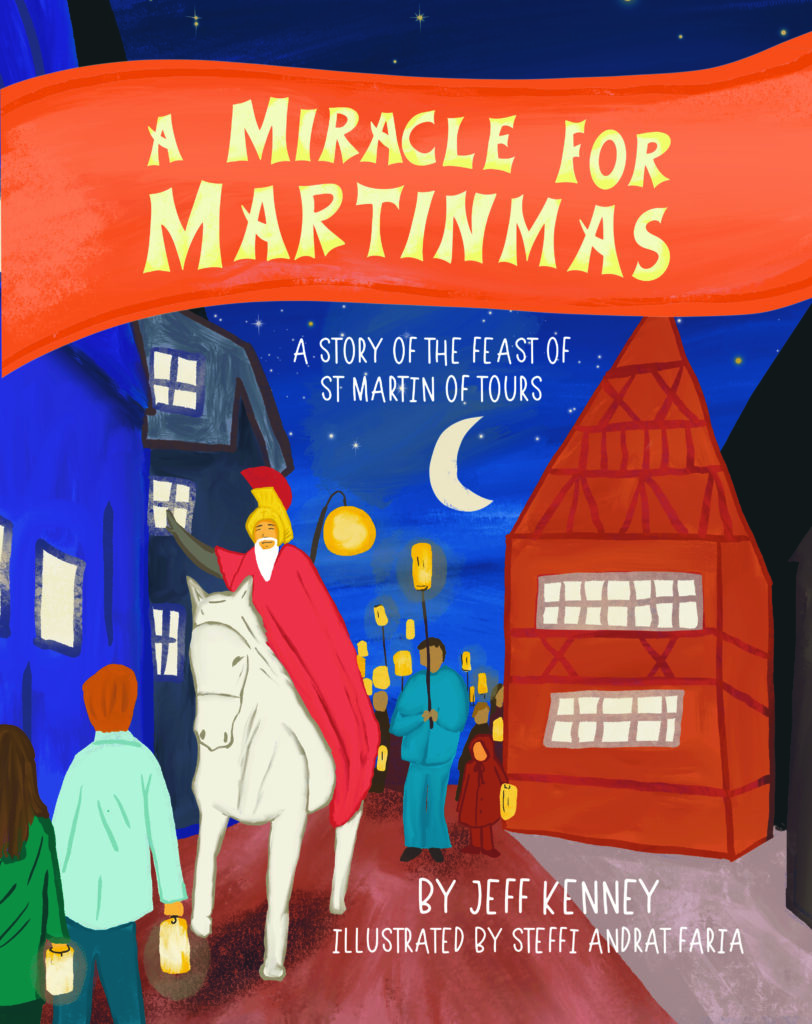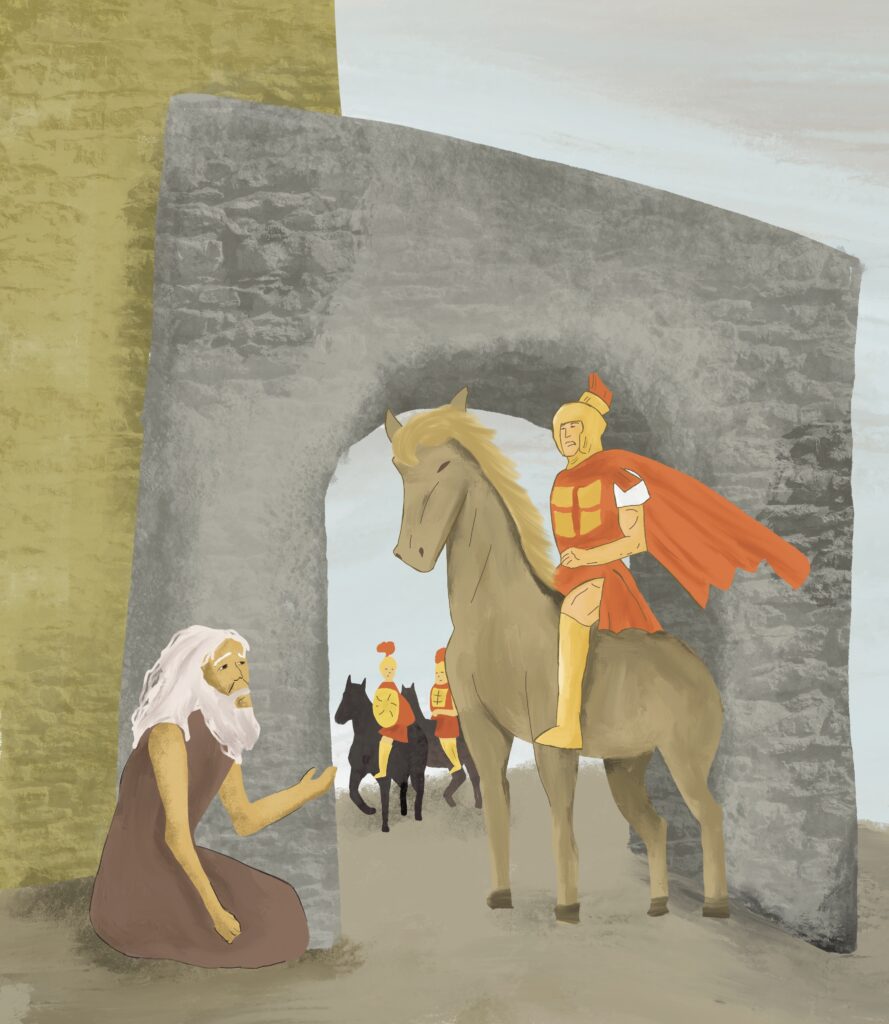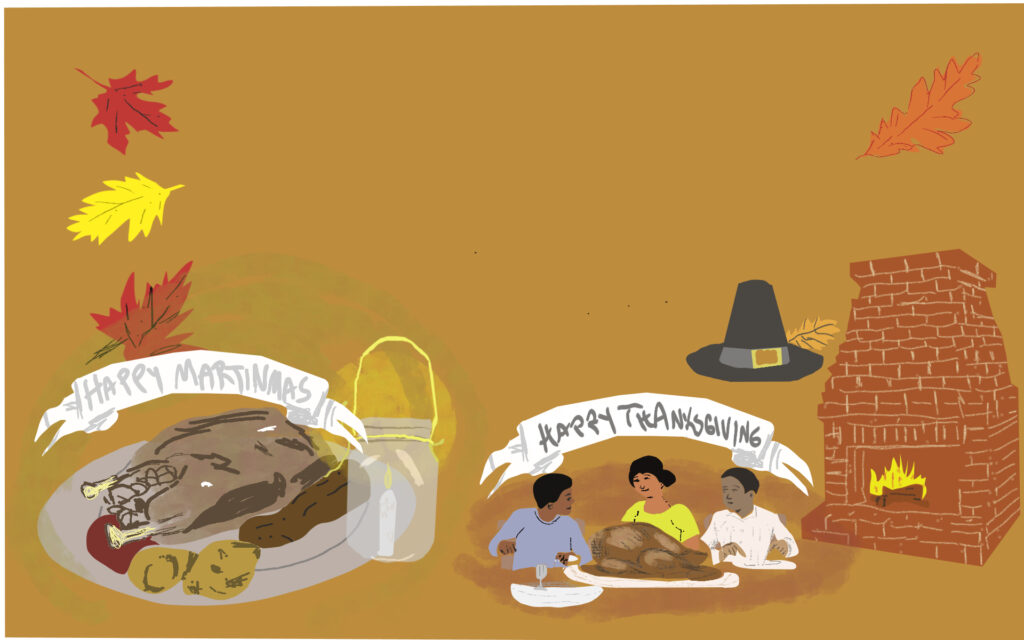Artwork by Steffi Andrat Faria

Peter McKinney didn’t expect his research project to take him to the actual voice of his injured great-grandfather, struggling after a plane crash over a century earlier during World War I. And his grandfather didn’t expect to encounter the story of another soldier, centuries earlier, named St. Martin of Tours, nor the long-cherished celebration of his feast day in a little German village where the young American can only hope to escape in safety…
Pick up your copy on Amazon here!
Check out the book trailer here!
St. Martin of Tours was a Roman soldier best known for cutting his cloak to warm a beggar who later appeared to him in a vision as Jesus.

In the centuries after his death on Nov. 11, 397, the relics of that cloak were contained in reliquaries whose name provided the origins of today’s words “chapel” and “chaplain,” also explained in these pages. By the 6th century, Martinmas marked the beginning of what became known as “St. Martin’s Lent,” a 56-day period of fasting that equaled to the traditional Lenten 40 days when weekends were excluded. It ended on January 6, the Feast of Epiphany, which in earlier centuries was a much more widely-celebrated day than Christmas.
This tradition eventually became the shorter season of Advent preceding Christmas Day and season. Martinmas (St. Martin’s Mass) once marked the end of the harvest season and beginning of winter, particularly in Germanic countries, and was widely celebrated with bonfires and processions, often accompanied by Martinmas / The Feast of St. Martin someone on horseback dressed as St. Martin and the carrying of lanterns.

There is some thought that Martinmas celebrations, transported to the New World particularly by the Pennsylvania Dutch, may have influenced the American holiday Thanksgiving, also held in November and also involving consuming a large bird (Martinmas, as referenced in this book, often included a feast centered on goose, while turkeys are the poultry of choice in the US). And while no direct evidence links it to the time of the Armistace ending World War I in 1918 (and thus today’s Veterans Day holiday in the US), given the European locale, St. Martin’s stature as soldier, and the symbolic choice to end the war on the 11th hour of the 11th day of the 11th month seems unlikely to be coincidence.

Regardless, Martinmas presents an opportunity for Christians today to revive yet another significant, joyful, and longstanding Feast of the Church.
